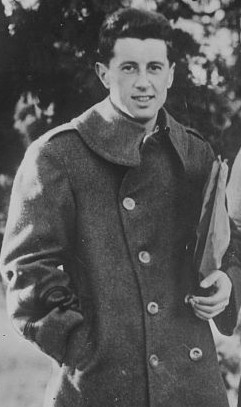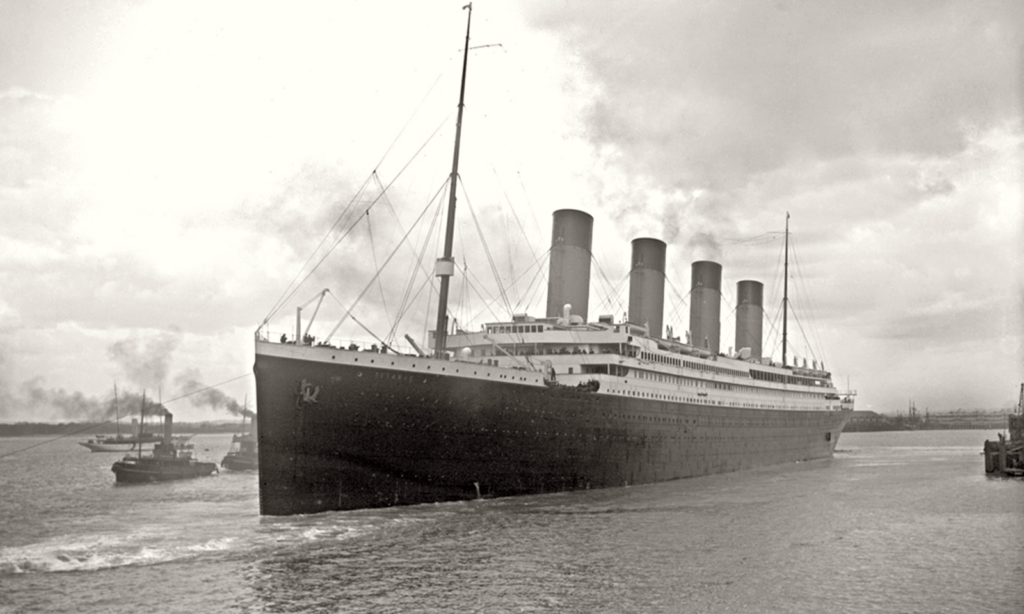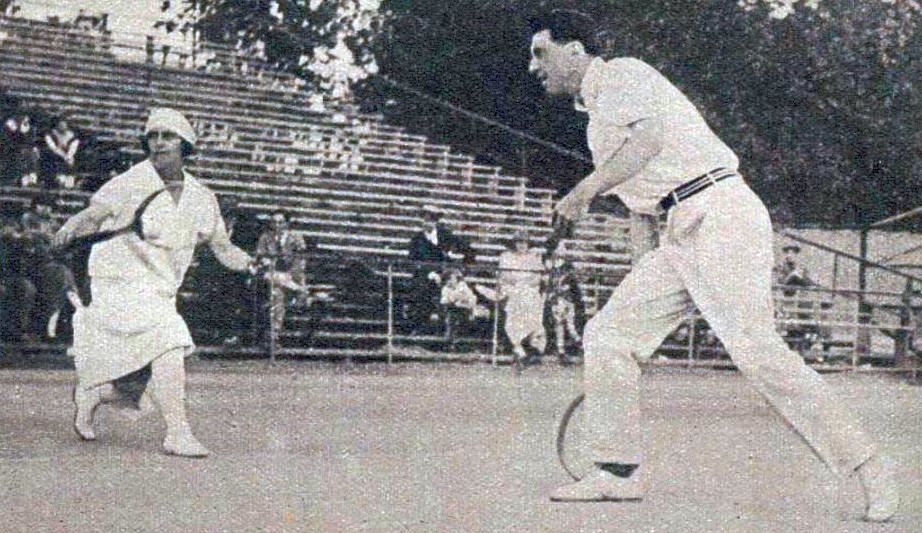Richard Norris Williams was a passenger aboard the RMS Titanic who went on to become a National Tennis Champion in the United States and Olympic gold medalist in mixed doubles tennis.

The Swiss Philadelphian
Williams was a direct descendant of Benjamin Franklin. Both of his parents were from Philadelphia. His father, Duane Williams, helped to found the International Tennis Federation.
He was born in Geneva, Switzerland, and went to a Swiss boarding school. R. Norris Williams and his father boarded the Titanic in 1912.
HMS Titanic
Duane and Richard Norris Willaims were first-class passengers on the HMS Titanic. The British passenger liner was the largest ship afloat when it set sail.
Over 1500 people died when the ship sank on a frigid spring night in the middle of the Atlantic.
Just after the ship collided with an iceberg, the two Williams men came across a steward who was trying to help a panicked passenger trapped in their cabin.
R. Norris Williams freed the trapped passenger by breaking down the cabin door. The steward scolded him and threatened to fine him for damaging ship property. This event inspired a scene in James Cameron’s 1997 film.
They went to the ship’s bar but found it closed. The nearest steward refused to unlock the door. Duane Williams handed his son his empty flask, which became a family heirloom.
As the ship continued to sink, they went up to the deck. Many lifeboats were already clear of the ship. They could see the lights of the lifeboats glittering in the distance. They retreated from the intense cold by going into the gymnasium, where other passengers had gathered.

The Fight for Survival
The Titanic carried 20 lifeboats capable of carrying a total of 1,178 people. There were 2,209 souls on board. Only 712 survived. Due to the chaos that followed the ship’s collision with an iceberg, many of the lifeboats only carried a small fraction of their maximum capacity.
Neither of the Williams men claimed a seat on the lifeboats. They remained on the boat deck of the doomed ship until the end. They jumped clear of the ship just before it went under. The elder Williams was killed by a huge piece of falling debris – one of the ship’s chimneys.
“I saw one of the four great funnels come crashing down on top of him,” Williams said when he recounted his father’s death. “Just for one instant I stood there transfixed – not because it had only missed me by a few feet … curiously enough not because it had killed my father for whom I had a far more than normal feeling of love and attachment; but there I was transfixed wondering at the enormous size of this funnel, still belching smoke. It seemed to me that two cars could have been driven through it side by side.”
Williams swam to one of the lifeboats, Collapsible Boat A, and clung to the side for a long while before climbing aboard. The boat was already partially submerged, and its passengers were waist-deep in the frigid water.
Rescue and Hypothermia
“I was not under water very long,” Williams recounted later, “and as soon as I came to the top I threw off the big fur coat. I also threw off my shoes. About twenty yards away I saw something floating. I swam to it and found it to be a collapsible boat. I hung on to it and after a while got aboard and stood up in the middle of it. The water was up to my waist. About thirty of us clung to it. When Officer Lowe’s boat picked us up eleven of us were still alive; all the rest were dead from cold.”
Over half of the lifeboat’s passengers died of hypothermia before being found and rescued by Fifth Officer Lowe aboard Lifeboat 14. He ferried Williams and others to Collapsible Boat D.
The closest ship was the RMS Carpathia, which reached the Titanic survivors one hour and forty minutes after the ship sank. It was another four hours before the final lifeboat was found and its passengers collected.
After spending hours in the freezing cold water, Williams’ legs were so badly frostbitten that Carpathia’s doctor wanted to amputate. Williams refused. He paced the deck to keep the blood flowing, not resting or sleeping for more than two hours at a time. His legs made a full recovery.
Just two months after the sinking of the Titanic, Williams was back to playing tennis competitively. He played against Karl Behr, another Titanic survivor, in a tournament near Boston.
Williams served in the United States military during the Great War. He was awarded the Croix de Guerre and the Legion of Honor. Both before and after his military service, he played tennis professionally. For many years, he was regarded as one of the best tennis players in the world.
Williams’ Tennis Career
When Williams was twenty years old, he won the Swiss Tennis Championship. He went on to attend Harvard University and become the intercollegiate tennis champion three years running.
After college, Williams won a great many tennis championships. He earned two men’s singles titles at the U.S. Championships and two more at the U.S. Clay Court Championships. Other wins over the years included the Newport Casino Championships and the Pennsylvania Lawn Tennis Championships.
Williams excelled both as a singles player and as a doubles player. He and a partner won the Davis Cup twice (that’s the World Cup of tennis) when Williams was 34 and 35.
Williams excelled both as a singles player and as a doubles player. He and a partner won the Davis Cup twice (that’s the World Cup of tennis) when Williams was 34 and 35.

He played in the 1924 Olympics at the age of 33. Despite a sprained ankle, he won the gold in mixed doubles with his partner Hazel Hotchkiss Wightman.
He remained active until the age of 44, when he finally retired from championship tennis. He lived in Philadelphia with his wife and four children and worked as an investment banker. He also served as the President of the Historical Society of Pennsylvania for 22 years.
Williams lived to the age of 77.

